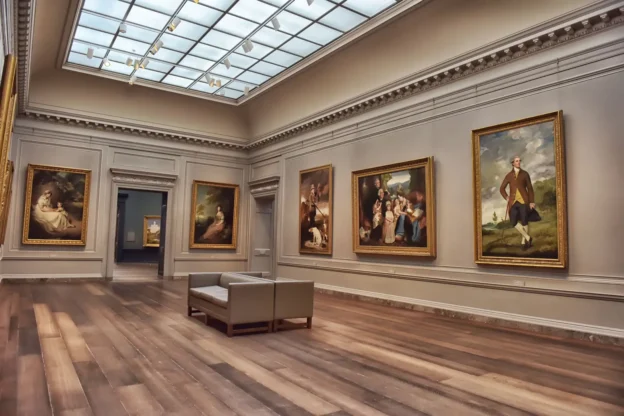Dublinia, a notable Dublin museum, invites you to delve into the city’s Viking heritage. Its exhibits recount the Vikings’ notable influence, including establishing Ireland’s first trade routes and erecting the renowned Christ Church Cathedral. Visitors can board a Viking warship, master warrior skills, and explore the nuances of Medieval Dublin, from its justice system to health practices. The museum’s home, Synod Hall, is an architectural gem from the 19th century, restored by George Edmund Street.
14 Henrietta Street offers a profound journey through Dublin’s social history. The street itself transports you to another era, leading to a museum experience enriched by enthusiastic guides. This institution narrates the transformation of an affluent district to a struggling community, engaging visitors with a mix of storytelling and multimedia.
The Chester Beatty, nestled within Dublin Castle, showcases the vast collections of Sir Alfred Chester Beatty. With artefacts ranging from ancient Egyptian texts to Chinese prints, it’s a treasure trove of cultural history. However, some visitors might find the display descriptions a bit challenging to read, so come prepared with glasses if needed.
Dublin’s Museum of Natural History, affectionately known as ‘the Dead Zoo,’ is an intriguing stop. Free to the public, it houses an extensive collection of taxidermied animals, offering a glimpse into the biodiversity of the past and present. Established in 1857, it stands as one of Dublin’s historical pillars.
EPIC Museum, a recent addition to Dublin’s cultural scene, has quickly risen to prominence. Opened in 2016, it’s been recognized as Europe’s leading tourist attraction. The museum celebrates the Irish diaspora, sharing the tales of Irish emigrants who have shaped the world as scientists, politicians, poets, and rebels.
Adding to this rich tapestry of cultural experiences is the Drogheda Museum. This local treasure, nestled in the historic town of Drogheda, provides an intimate look at the past, highlighting the region’s unique contributions to Ireland’s national narrative. From ancient artefacts to stories of the town’s pivotal role in various historical events, the Drogheda Museum is a must-visit for anyone seeking a complete understanding of Ireland’s multifaceted history. So pack your suitcase and plan your next trip to one of Ireland’s top museums.


